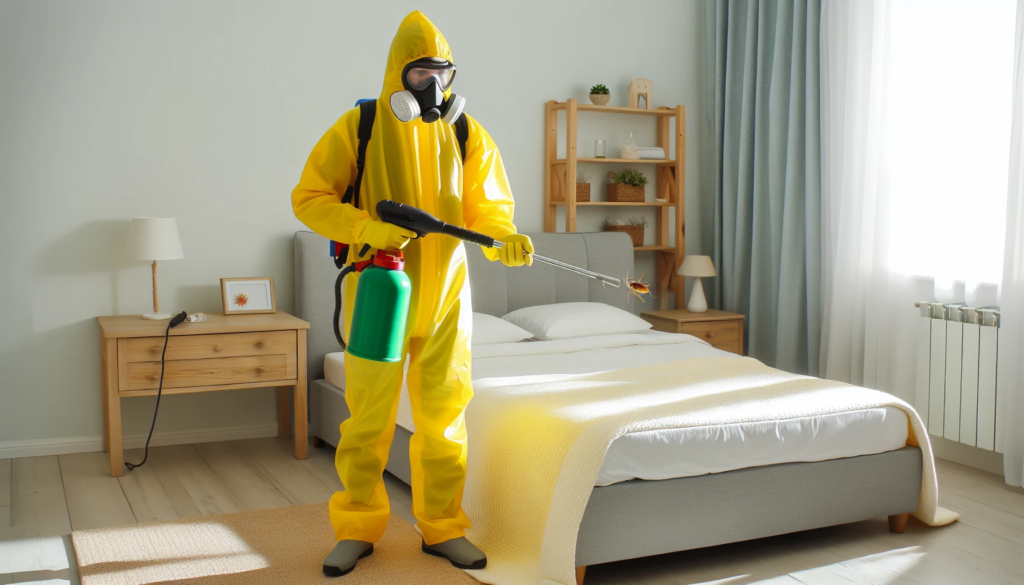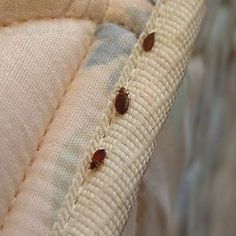Reliable Bed Bug Exterminator: DC Providers with Heat Treatment
Wiki Article
Exploring the Scientific Research Behind Bed Insect Warmth Treatments as a Sustainable Parasite Administration Approach
One such method that has gotten grip in current years is the usage of warmth treatments to fight bed insect invasions. The details of just how heat effectively removes bed bugs and the wider ramifications for lasting bug monitoring techniques make this a subject worth discovering better.Bed Pest Warmth Therapy Refine

Thermal Death Point for Bed Pests
Revealing bed bugs to raised temperature levels beyond their thermal resistance range is vital for achieving efficient eradication in warm therapy processes. The thermal death point for bed pests describes the temperature level at which these bugs can not survive. Research suggests that bed insects begin to die when exposed to temperature levels above 113 ° F(45 ° C) for a continual period. As the temperature raises, so does the death price of bed bugs. At around 118 ° F(48 ° C ), bed pests begin to pass away swiftly, with a mortality price of virtually 99% within minutes of exposure. This shows the level of sensitivity of bed bugs to high temperature levels and highlights the effectiveness of warm therapies in eliminating invasions. By getting to and maintaining temperatures above the thermal fatality factor for bed bugs, insect monitoring specialists can guarantee detailed removal of bed pest populations, including hard-to-reach areas where chemical therapies might be much less reliable. Recognizing the thermal death point for bed insects is crucial for applying effective heat treatment methods and attaining sustainable bug monitoring end results.Advantages of Heat Treatments
Having actually established the essential thermal fatality point for bed bugs, it is vital to currently explore the considerable benefits that heat treatments use in effectively eliminating these resistant pests. One of the main benefits is that warmth can penetrate deep into fractures and crevices where bed pests hide, guaranteeing that also the most hard-to-reach areas are heated up to dangerous temperature levels.Furthermore, warm treatments are eco pleasant and non-toxic, making them a sustainable pest administration method. Unlike chemical pesticides, warmth therapies do not leave harmful deposits that can posture risks to human health or the environment. This aspect is particularly essential in sensitive settings such as medical facilities, schools, and suburbs where chemical use may not be desirable.
Additionally, warmth treatments have a high success rate in getting rid of bed insect infestations in a single therapy, reducing the demand for numerous gos to and reducing interruption to residents. This efficiency not just conserves time and cash however additionally gives assurance to those managing bed bug problems.
Performance of Warm Therapy

Research research studies have consistently shown the effectiveness of warm therapies in accomplishing a click here for more info high rate of bed insect death. Effectively performed warm therapies can get to all the fractures and gaps where bed insects might be nurturing, ensuring a detailed method to extermination. Warmth treatments have the included advantage of killing bed bug eggs, which are frequently resistant to standard chemical treatments. Generally, the effectiveness of warm view publisher site therapies in getting rid of bed insect problems makes them a sustainable and reputable pest monitoring technique.
Lasting Parasite Monitoring Conveniences
Applying sustainable bug monitoring methods offers lasting benefits for both the environment and public health and wellness. By making use of methods such as warm therapies for pest control, we can minimize the dependence on unsafe chemical pesticides that can have negative results on ecosystems and human health and wellness - exterminator. Lasting parasite monitoring methods aid in maintaining biodiversity by targeting specific parasites without harming non-target organisms, thereby keeping a well balanced ecological community
Additionally, sustainable pest management practices contribute to the total health and well-being of the public. By minimizing direct exposure to hazardous chemicals made use of in standard parasite control methods, warmth treatments offer a much safer choice for pest monitoring in residential, commercial, and public rooms. This decrease in chemical usage also helps in preventing chemical residues from infecting water, air, and soil, protecting environmental high quality.
Verdict
To conclude, bed insect heat therapies have been shown to be a efficient and lasting bug administration approach. The thermal death point for bed insects makes them web prone to warmth therapies, which have various advantages over typical chemical therapies. The effectiveness of warm therapies in removing bed insect problems while reducing environmental impact highlights the capacity of this technique as a lasting option for pest control.The bed insect warm treatment process includes increasing the temperature within plagued areas to a level that efficiently gets rid of bed insects and their eggs. By reaching and preserving temperatures above the thermal death point for bed pests, pest monitoring specialists can ensure comprehensive removal of bed pest populaces, consisting of hard-to-reach locations where chemical treatments might be less reliable. One of the key benefits is that warm can permeate deep into cracks and crevices where bed bugs conceal, ensuring that also the most hard-to-reach locations are heated up to lethal temperatures. Unlike chemical therapies that may leave behind resistant populaces, warmth therapies provide a non-toxic and eco pleasant option that can permeate deep into furnishings, wall surfaces, and other hard-to-reach locations where bed insects hide.
The thermal fatality point for bed bugs makes them at risk to warmth treatments, which have countless benefits over conventional chemical therapies.
Report this wiki page